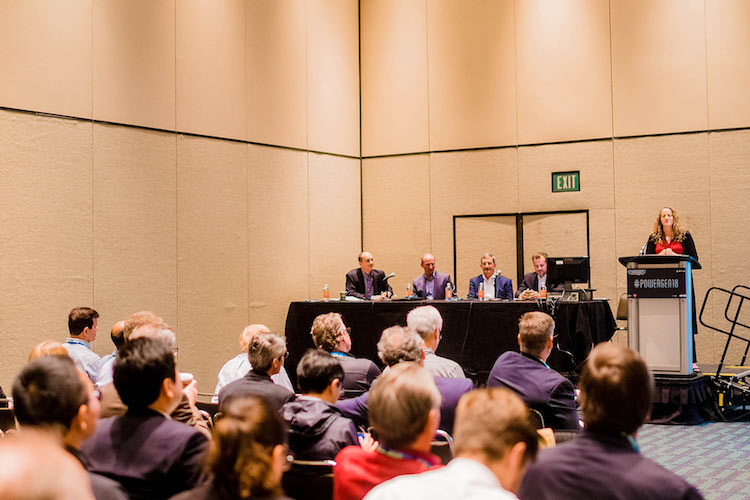At a mega-session during POWER-GEN International, a panel made up of utility resource planners, transmission operators and generation technology experts all seemed to come to the same conclusion: when it comes to picking energy generation technologies for the future, there is no standout technology. Each technology comes with a series of pros and cons that must be weighed in order to set a course for the future.
Scott Benson, Manager of Resource Planning and Transmission with Lincoln Electric System explained that for him, a mix of about one-third renewables, one-third gas, and one-third coal makes the most sense for his utility. The small utility serves about 135,000 customers and has a peak load of 786 MW.
He said that when he runs an analysis of generation technologies, the system always recommends coal-fired generation but that’s only if he doesn’t add a cost for carbon emissions. But you have to believe that we will put a price on carbon in the future, he said. How can you plan out 40 years and not expect a price on carbon?
Herbie Johnson, the general manager of hydropower with Southern Company, said for his utility, when you look at dollars and cents, the clear winner is fast-start gas-fired generation.
“But does that matter?” he asked.
If the customers want renewables, you have to give them what they want. Johnson explained that Southern Company helped develop a microgrid around a new community of 64 smart homes – the homes use solar and battery energy storage and have smart interconnected devices that talk to the grid and know when to turn on and off according to the energy supply available.
He said the homes sold out immediately, indicating a strong interest in renewable energy and smart homes, at least for customers that can afford it, he said.
Further, Johnson said that when the utility disconnected the microgrid from the main grid, i.e. when they “islanded” it, he was “very impressed” with its performance. Johnson said the batteries maintained 60 hertz flawlessly, which was a bit of a surprise to him.
Johnson also extolled the virtues of pumped hydropower storage as an excellent transmission resource and hopes that more will be built in the future.
Mark Hachenski, VP of product management with GE explained that even when running a gas-fired generation plant, there are tradeoffs to be made. He said he presented to a group that consisted of people on the plant management side of the business and those on the energy trading side of the business. When he explained how they could ramp up a turbine to squeeze out more power, the energy traders looked at the plant operators and said ‘why haven’t you told us this!’ but the managers explained that it will cost the company more in operations and maintenance to run the turbine at that level.
In order to arrive at a decision, careful cost analyses have to be performed, said Hachenski.
Carl Monroe, Executive VP and COO at Southwest Power Pool explained that generation needs to be more flexible in order to meet the demands of the variable wind and solar that are on the grid. But, the industry has yet to quantify and value that flexibility so that the market can respond to those price signals.
“We have a big challenge in that,” he said.
Benson advised resource planners to perform pilots and study as much as possible.
“We get our hands in everything to study and learn,” he said. Adding that when looking toward the future, whatever scenario ends up rising to the top will be one that LES has indeed studied.
“Which opportunity is the one to go for?” he asked. “Because I guarantee you that we will have studied it. The problem is that we will have studied a million other things, too.”





